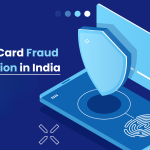In today’s fast-paced world, personal loans have become a convenient way for individuals to meet various financial needs, whether it’s for education, medical emergencies, weddings, or unexpected expenses. In India, personal loans can be availed through two primary channels—traditional branch based lenders such as banks and non-banking financial companies (NBFCs) or the fast growing number of online / digital fintech lenders.
When deciding between online lenders vs. traditional lenders, it’s essential to understand how each option works and which one suits your specific financial situation. In this post, we will compare the two, discussing their pros, cons, and the factors that should influence your decision.
Traditional Lenders for Personal Loans in India
Traditional lenders are typically banks or NBFCs that offer personal loans through branches and physical outlets. These lenders have been the go-to choice for Indian borrowers for decades.
Key Features of Traditional Lenders:
- Personalized Services: Traditional lenders often offer a more personalized, face-to-face experience. This can be helpful if you need advice, have complex financial requirements, or prefer in-person interactions.
- Established Credibility: Since traditional lenders have been around for a long time, they have built a reputation for reliability. Borrowers feel more secure knowing they are dealing with well-established financial institutions.
- Variety of Financial Products: Along with personal loans, banks and NBFCs typically offer a wide range of financial products like home loans, car loans, credit cards, and savings accounts. You may even qualify for special loan terms if you already have a relationship with the bank.
- Lower Interest Rates for Eligible Borrowers: Traditional lenders often offer lower interest rates for customers with good credit scores and long-standing relationships with the bank. Some even offer special rates for salaried professionals or existing account holders.
Drawbacks of Traditional Lenders:
- Longer Processing Time: Getting a personal loan from a traditional lender can take longer due to the extensive paperwork, credit checks, and in-person visits to the bank. This process can be slow, often taking several days to weeks for approval.
- Stricter Eligibility Criteria: Banks and NBFCs typically have stricter eligibility requirements, such as higher credit scores, stable income, and substantial documentation. If you do not meet these criteria, your application may be rejected.
- Inconvenience of Branch Visits: Traditional lenders may require you to visit their branches multiple times to submit documents, sign agreements, or follow up on your application status. This can be inconvenient for those with busy schedules.
Online Lenders for Personal Loans in India
Online lenders are fintech companies or digital platforms that offer personal loans via websites or mobile apps. Over the past few years, these lenders have grown rapidly in India, providing fast, convenient, and paperless lending solutions.
Key Features of Online Lenders:
- Speed and Convenience: One of the biggest advantages of online lenders is the speed of approval and disbursement. Since the process is entirely digital, many online lenders approve and disburse personal loans within 24 to 48 hours.
- Less Paperwork: Online lenders typically require minimal documentation, and many offer instant loan approvals based on your Aadhaar, PAN, or bank statement verification. This makes the process hassle-free and fast.
- Flexible Eligibility Criteria: Online lenders tend to have more flexible eligibility criteria compared to traditional banks. Some cater specifically to individuals with low credit scores or irregular incomes, making personal loans more accessible to a broader range of borrowers.
- Transparency and User-Friendly Platforms: Many online lenders have easy-to-use platforms that allow you to check your loan eligibility, compare interest rates, and calculate EMI options with just a few clicks. The entire process, from application to approval, is transparent, and you can track your loan status online.
Drawbacks of Online Lenders:
- Higher Interest Rates: Online lenders may charge higher interest rates compared to traditional lenders, especially if you have a low credit score or an unstable income. The convenience and speed of the process often come at a cost.
- Limited Personal Interaction: Since online lending is a digital process, there is no face-to-face interaction with loan officers. If you prefer personalized financial advice or have a complex financial situation, you might find online lenders less accommodating.
- Potential for Scams: The rise in online lending has also led to the emergence of fraudulent lenders. It is essential to research and choose credible online lending platforms to avoid falling victim to scams.
Recommended Read: Everything you need to know before borrowing
Comparing Online Lenders vs. Traditional Lenders
1. Processing Time and Convenience
- Online Lenders: Offer fast, digital, and paperless application processes. Most loans are approved and disbursed within 24 to 48 hours.
- Traditional Lenders: Have a longer approval process due to manual documentation and in-person visits, often taking several days or weeks.
2. Interest Rates
- Online Lenders: Interest rates can be higher, especially for borrowers with lower credit scores.
- Traditional Lenders: Generally offer lower interest rates, but only to those who meet strict eligibility criteria (e.g., high credit score, stable income).
3. Eligibility Requirements
- Online Lenders: More flexible, accepting applications from individuals with low credit scores or variable income.
- Traditional Lenders: Have stricter criteria, often requiring a high credit score, stable income, and extensive documentation.
4. Documentation
- Online Lenders: Require minimal documentation and often use digital verification through Aadhaar and PAN.
- Traditional Lenders: Require physical documentation and sometimes multiple branch visits for verification.
5. Customer Service and Support
- Online Lenders: Offer digital support through chatbots, email, or phone. However, customer service may be less personalized.
- Traditional Lenders: Provide in-person support at bank branches, offering a more personalized experience, especially for complex financial needs.
Which Option Should You Choose?
The choice between online lenders vs. traditional lenders depends on your specific financial situation, preference for convenience, and loan requirements.
Choose Online Lenders if you:
- Need quick access to funds and want a fast, hassle-free process.
- Have difficulty meeting the strict criteria of traditional banks.
- Prefer an entirely digital and paperless loan experience.
Choose Traditional Lenders if you: - Are eligible for lower interest rates and prefer a more personalized, in-person experience.
- Need more structured advice on your financial situation.
- Are comfortable with longer processing times and can manage branch visits.
Ultimately, both options have their own advantages, and the best choice depends on your financial needs, urgency, and personal preferences. By comparing online lenders vs. traditional lenders, you can make an informed decision about which type of loan works best for your financial situation.
FAQs
- Which is faster for loan approval: Online lenders or traditional lenders?
Online lenders are faster, often approving and disbursing loans within 24-48 hours. Traditional lenders usually take longer due to manual verification and paperwork. - Are interest rates higher with online lenders compared to traditional lenders?
Yes, online lenders may charge higher interest rates, especially if you have a low credit score or inconsistent income. Traditional lenders generally offer lower rates to eligible borrowers. - What kind of documentation is required for online personal loans?
Online lenders typically require minimal documentation such as Aadhaar, PAN, and bank statements, with everything verified digitally. - Are online personal loans safe in India?
Yes, as long as you apply through a credible and regulated platform. It’s essential to research online lenders to ensure they are legitimate and avoid potential scams. - Can I get a personal loan from a traditional lender if my credit score is low?
Traditional lenders usually have stricter eligibility criteria, including a good credit score. If you have a low credit score, online lenders may be more flexible.




